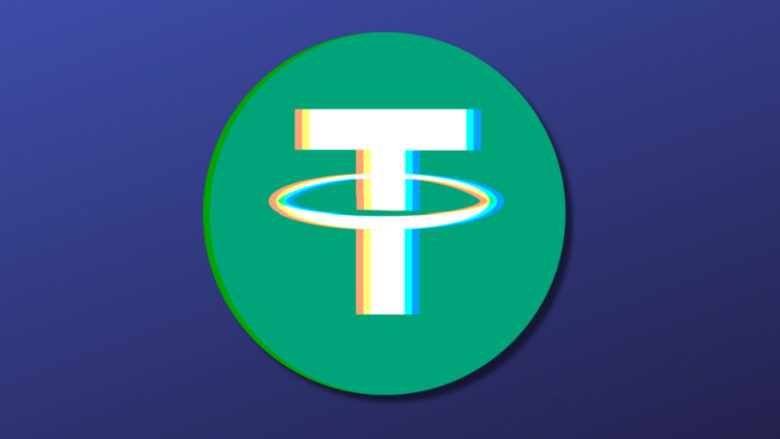Tether: Will the largest stablecoin USDT be illegal in the EU from the end of December 2024?

There is a major uncertainty factor in Europe’s crypto sector, and it concerns a company that has no presence in the EU. Tether, provider of by far the largest and most important stablecoin in the world, known as USDT, is currently having to ask itself whether USDT will still be legal in the EU from 2025. The crypto law MiCA (Markets in Crypto Assets) regulates who in the EU is allowed to offer which stablecoins and under which conditions.
On the importance of Tether (USDT): The stablecoin has long been the third largest cryptocurrency behind Bitcoin and Ethereum and currently has a market cap of $113 billion. This would mathematically put Tether among the 140 most valuable companies in the world and would be on par with Airbus or Allianz. USDT is indispensable as a dollar replacement, especially for crypto traders, and is one of the most traded cryptocurrencies in the world every day.
The return of crypto airdrops: Opportunities and risks for 2024
When looking for an answer as to whether USDT will be legal in the EU in the future or not, the responsible authorities are keeping quiet. When asked by Trending Topics, the EBA (European Banking Authority), the ESMA (European Securities and Markets Authority) and the German Bafin and the Austrian FMA only gave vague or no answers. The big question, however, is: Is USDT still legal in the EU under MiCA? Or do the so-called Crypto Asset Service Providers (CASPs) such as Bitpanda have to remove Tether from their offerings?
In principle, there are new rules for so-called ARTs and EMTs. These are:
- Asset Referenced Tokens (ARTs): According to Bafin, these are “crypto assets created by non-governmental entities whose performance is linked to legal tender ( e.g. dollars or euros) or other assets (gold, securities, other crypto assets or any mixture thereof).
- E-Money Tokens ( EMTs ): According to Bafin, a “crypto asset whose value stability is to be maintained by reference to the value of an official currency”, such as dollars or euros. This makes it clear that USDT, which reflects the dollar price 1:1, is an EMT
Now, MiCA stipulates that EMTs may only be offered to the public in the EU or admitted to trading on a trading platform for crypto assets if the issuer of that EMT:
- is authorised as a CRR credit institution or as an electronic money institution and
- has submitted a crypto-assets white paper to the competent authority and has published that crypto-assets white paper in accordance with Article 51.
EBA: Tether has not yet applied for authorization
Tether, whose headquarters are in the British Virgin Islands and Hong Kong according to the audit reports, has apparently not yet done either or sees no need to do so.
“The EBA is not aware of any Tether company having submitted to a national competent authority in the EU an application for authorisation under MiCAR.” –said a spokesperson for the European banking regulator EBA.
Bafin states: “Issuers of crypto assets that are to be backed by a form of reserve (so-called “stablecoins“) are currently only under BaFin supervision if the tokens are e-money or the issuer is an asset management company and the offer is specifically aimed at the German market.” Both organizations do not want to comment specifically on Tether and USDT and their future legality in the EU.
However, it is clear that there is great uncertainty about the legal status of Tether/USDT. The EBA points out that “stakeholders should establish procedures as soon as possible to assess compliance with MiCAR for cryptocurrencies/EMTs for which they provide corresponding services and should refrain from providing services that constitute a public offer, admission to trading or placement of non-compliant cryptocurrencies/EMTs from 30 June 2024.” However, Tether/USDT is still available at Bitpanda, Coinbase and Co.
Binance founder Changpeng Zhao could be sentenced to 3 years in prison
ESMA: “MiCA has raised some questions among market participants”
“We are aware that the entry of application of titles III and IV of MiCA have raised some questions amongst market participants and, in particular, in relation to the impact of unlicensed stablecoins’ issuers on the activities of (future) CASPs. We are actively discussing with our members how to best address those issues.“ – ESMA spokesperson
What do crypto legal experts say about Tether? For the time being, there is no problem, at least until the end of the year. “Until the end of 2024, CASPs like Bitpanda can continue to offer USDT as usual without any problems, but after that they will have to delist the stablecoin if the provider company Tether does not obtain a license in the EU,” says Oliver Völkel, a Viennese lawyer specializing in crypto issues.
“Tether currently has no reason to apply for a MiCA or e-money license in the EU because they do not have a location here and do not have to advertise USDT. Indirectly, however, it can be assumed that Crypto Assets Service Providers (CASPs) will put pressure on Tether to obtain such a license. Otherwise, they would have to delist USDT at the end of December 2024.”
The biggest crypto trends in 2024: Solana, Cardano & Polygon
Do CASPs have to delist USDT by the end of December?
Negotiations are already taking place behind the scenes. To underline the relevance of Tether for crypto companies such as exchanges: USDT is a very important dollar replacement in the lightning-fast trading of cryptocurrencies and is among the most traded crypto assets worldwide every day. If USDT were to disappear from one day to the next, a critical gap in trading would disappear. Competitors such as Circle with USDC could only partially fill this gap. For comparison: The market capitalization of USDT is currently $113 billion, USDC is much smaller at 33 billion dollars. Circle recently obtained an e-money license in France and describes itself as the only legal stablecoin in the EU at the moment.
All of this increases the pressure on Tether. “In the medium term, Tether will not be able to afford not to be in the EU. Its direct competitor Circle with USDC has obtained an e-money license and will thus be able to list and advertise its stablecoin in a regulated manner at CASPs,” says Völkel about the competitive advantage that Circle is trying to gain for USDC. “If you don’t advertise, you die, as the saying goes.”




























